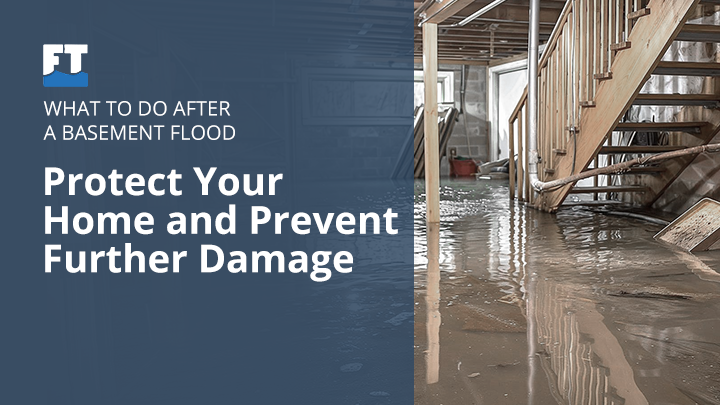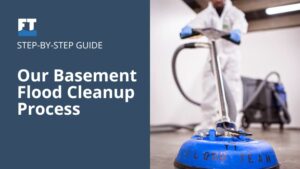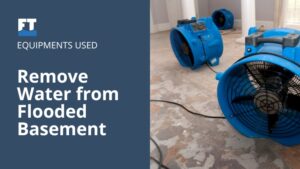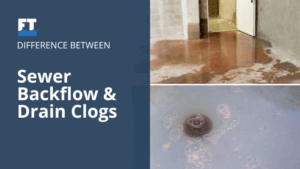You head downstairs and feel that unmistakable squish under your feet. Your heart sinks. The basement, your storage space, laundry room, or a cozy hangout is now a pool. It’s the kind of moment that leaves you stunned, unsure whether to panic or grab a mop.
In this article, we’ll guide you through the immediate actions to take when your basement floods. From staying safe to stopping the source and minimizing damage, these first steps can make a huge difference in how quickly and safely you recover.
1. Prioritize Safety First
The first rule? Never mix water and electricity. If any outlets or appliances are under water, turn off the electricity at the breaker—don’t try to reach it in the flood zone. If you smell gas, leave the area immediately and call the utility company. Never go down there until it’s safe—prioritizing safety is essential in a flooded basement, and the very first step in protecting yourself and your home.
2. Stop the Water Source
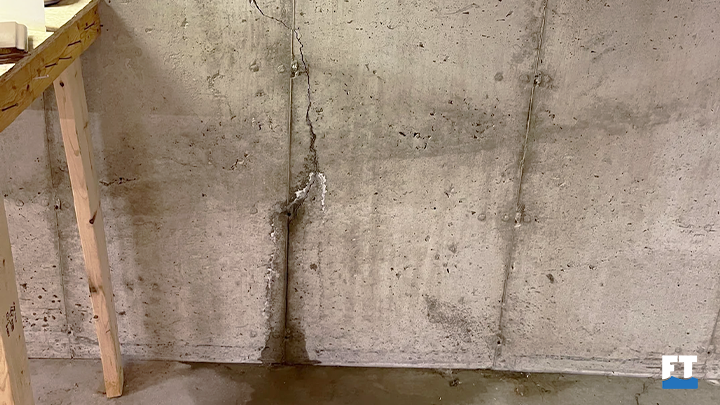
Figure out where the water is coming from. Burst pipes, sump pump failure, and heavy rain can be reasons, but knowing the source helps you stop more damage. If it’s a plumbing problem, shut off the main water supply. If it’s external, use sandbags or direct water away.
3. Contact Your Insurance Company
Call your insurer quickly—most policies cover leaking pipes or sewage backups, but not natural flood damage. Take clear photos and videos before touching anything. This helps support your insurance claim. Keep receipts for any emergency purchases.
4. Remove Standing Water
Don’t use a regular vacuum. Use a sump pump or wet/dry vac to remove water safely. If sewage or gray water is present, wait for professional basement flood cleanup services. Contaminated water carries health risks. Move wet items, such as carpets, boxes, and furniture, to a dry area and protect the surrounding space.
5. Dry Out the Basement Thoroughly
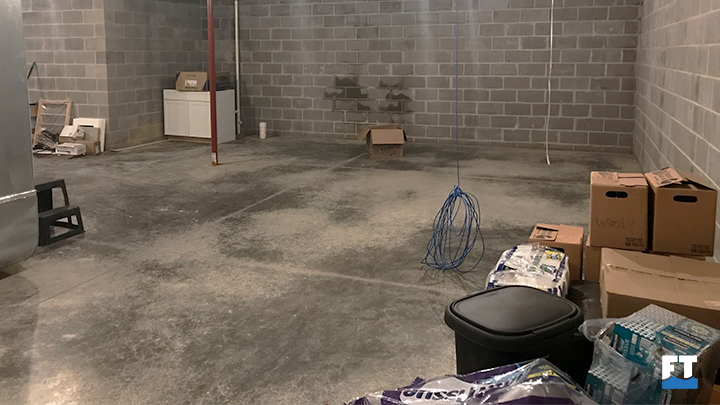
Open windows, use fans, and run a dehumidifier to circulate air and remove moisture. Water can hide beneath walls or flooring. Let everything dry for at least 48 hours—that helps prevent mold and follows the fundamentals of drying necessary for proper restoration..
6. Clean, Disinfect, and Sanitize
Once it’s dry, clean the surfaces with mild detergent and warm water. Where contamination is possible, possibly with sewage, use a bleach mix (1 tablespoon of bleach per gallon of water) to sanitize. Keep surfaces wet for a few minutes and rinse thoroughly. Be sure to safely dispose of any heavily damaged or moldy drywall, insulation, and porous materials, or consider calling basement flood cleanup services for expert support.
7. Call a Professional (if needed)
If you’ve experienced major basement flooding, sewage backup, or structural damage, enlist the help of professionals promptly. Flooded basement cleanup experts have the right tools—fans, commercial dehumidifiers, and mold treatment tools—and can help with insurance claims. Additionally, consider consulting an electrician, plumber, foundation repair specialist, or gutter specialist as needed.
Don’t Let a Flooded Basement Get Worse—Act Fast
Time matters when your basement floods. Whether it’s a plumbing issue or stormwater, quick action can save you thousands in repairs. If you’re overwhelmed or unsure where to start, The Flood Team is ready to help with professional cleanup, drying, and full restoration services. Contact us today!

Final Thoughts
Basement floods can be stressful, but you can minimize the damage they cause. Prioritize safety, stop the water, document everything, remove moisture fast, and clean thoroughly. If things feel out of your control, especially with gray or sewage water, don’t hesitate to hire professionals. Acting quickly helps protect your home and peace of mind.
FAQs
Why is my basement flooding?
Your basement might be flooding because of poor drainage, cracks in the foundation, clogged gutters, or a broken sump pump. Water from heavy rain or rising groundwater can find its way inside if your home isn’t properly sealed.
How to prevent basement flooding during heavy rain?
Keep gutters and downspouts clean so water flows away from your home. Make sure the ground around your house slopes away from the foundation. Use a sump pump and seal any cracks in walls or floors. You can also install a French drain or backwater valve for extra protection.
Does home insurance cover basement flooding?
It depends on the cause. Many policies cover burst pipes and sewage backups, but not natural flooding. Call your agent.
When should I call a professional basement flood cleanup service?
Call them if the water is deep, sewage-related, or if structural damage is present. Pros also help with mold prevention and insurance claims.
How soon can mold start after flooding?
Mold growth can begin in 24 to 48 hours, so drying should start immediately.

